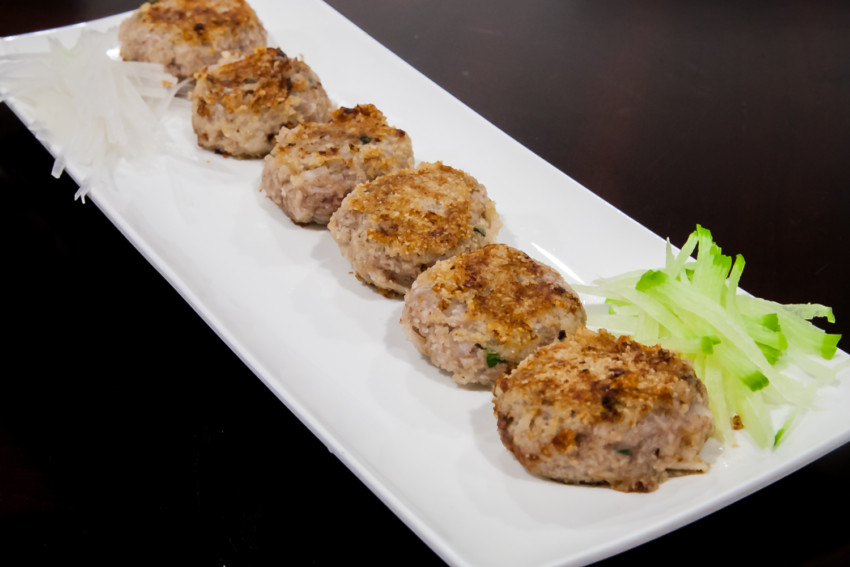
Daikon Beef Meat Pies (萝卜牛肉饼 Luo Bo Niu Rou Bing)
November 27, 2021 Print
I believe our food habits depend on how we ate when we were young. It definitely becomes more difficult to change or get used to new tastes as we get older. That’s why I’m trying hard to expose my kids to various foods while they are little, including those that have an acquired or bitter taste—like many leafy and root vegetables.
Daikon, also known as daikon radish, is definitely one with a unique and acquired taste. It can taste a bit pungent and bitter to someone who’s never had it. But to others who eat it regularly, the pungency is negligible and dwarfed by its mild and subtly sweet flavor. In one of my previous post, Daikon Pork Bone Soup, I wrote that it took my husband more than 30 years to finally begin tolerating daikon. So I know I need to start early to get my kids used to the taste. I remember distinctively the first time I fed my oldest a piece of daikon when he was close to 2. He had such a genuine, untrained disgusted face after taking a bite that we laughed nonstop for 2 minutes. So I started feeding daikon to my youngest when he was just 1 and now he likes it. My oldest, however, will still only eat daikon on a case-by-case basis. Sometimes he loves the daikon in a dish, but other times he won’t touch it at all.
Daikon radish is said to have many health benefits. Right now as the days become shorter and colder, it’s definitely the right time to enjoy daikon. So the other day I had some small white daikon pieces leftover from making Daikon Pork Bone Soup. I didn’t want it to go to waste, so I sliced it up, mixed it with a small amount of ground beef, and made it into small round meat pies. It turned out pretty good. My oldest did not reject it, which was great. I made some further modifications and here it is. It’s super easy to make and works well in a lunch box for kids. You can even mix everything the evening before and cook the meat pies in the morning (which only takes about 10 minutes) either as part of a breakfast or for lunch.
Tools: food processor, mandoline slicer, or coarse cheese grater
Gluten Free, Low Carb
Preparation Time: 20 minutes
Total Time: 30 minutes
Servings: ~10 small meat pies
Ingredients:
- A small piece of daikon1 (~1/2 lb or ~200 g)
- ~1/4 lb ground beef (~100 g)
- 1 green onion
- 3 tablespoons almond flour 2
- 1/3 teaspoon + 1/4 teaspoon kosher salt (reduce by half if using table salt)
- pinch of ground black pepper
- 1 tablespoon sesame oil
- 1 tablespoon vegetable oil
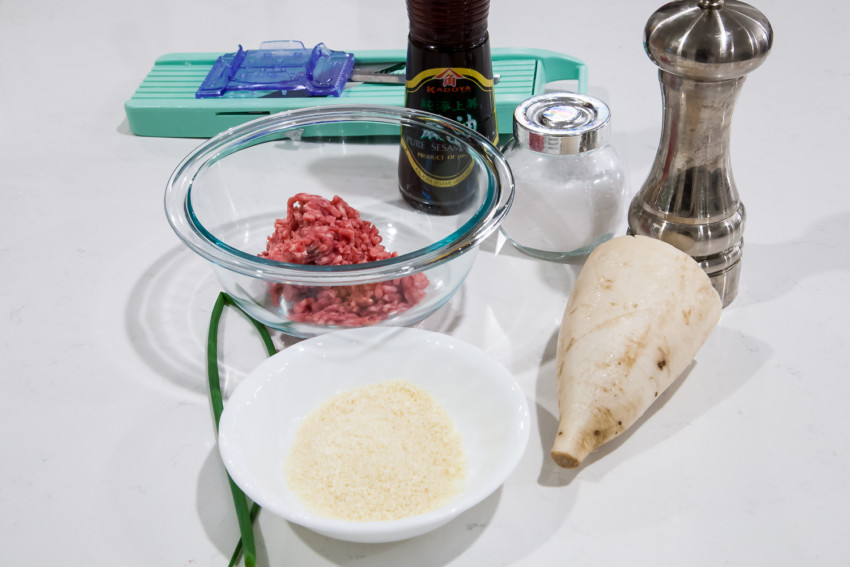
Preparation:
- Peel the daikon. Use a food processor, mandoline slicer, or coarse cheese grater to slice the daikon into thin, small pieces. Add the first 1/3 teaspoon of kosher salt to the daikon and mix thoroughly. Let the daikon sit for 5 -10 minutes to marinate and release some water.
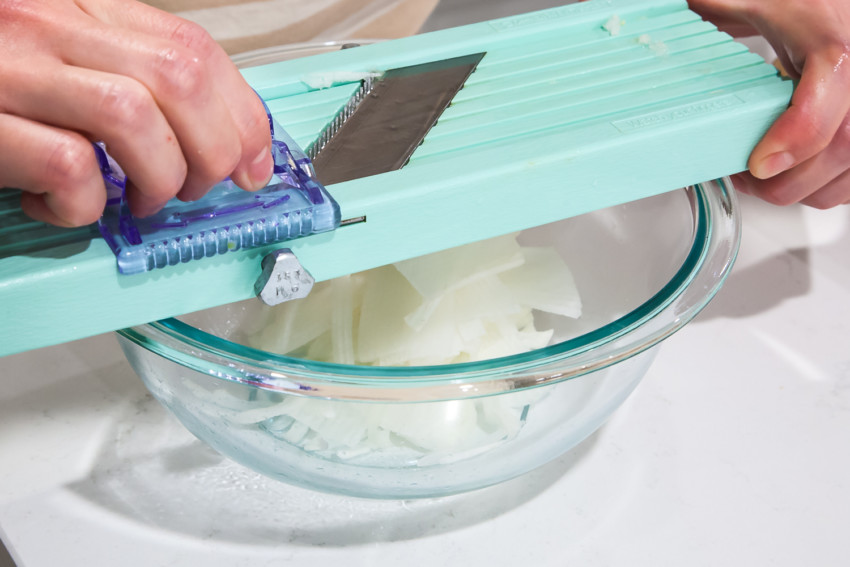
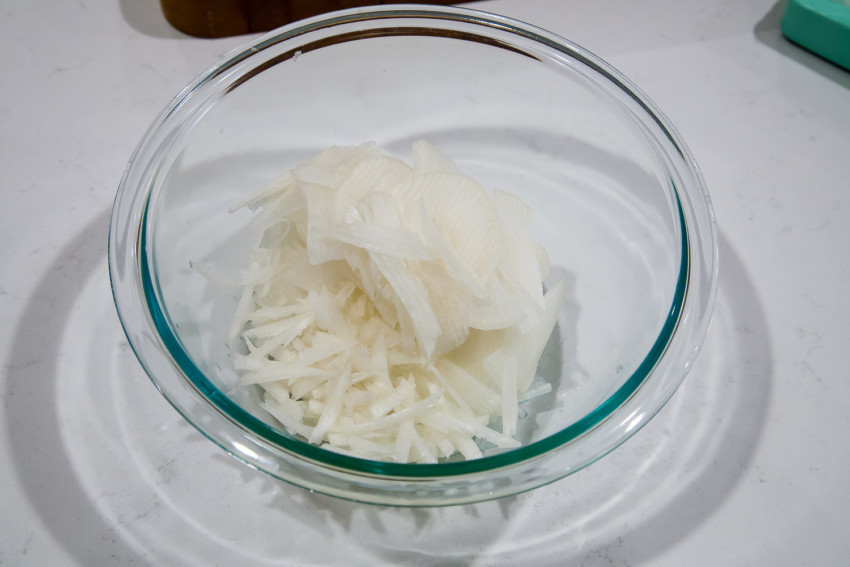
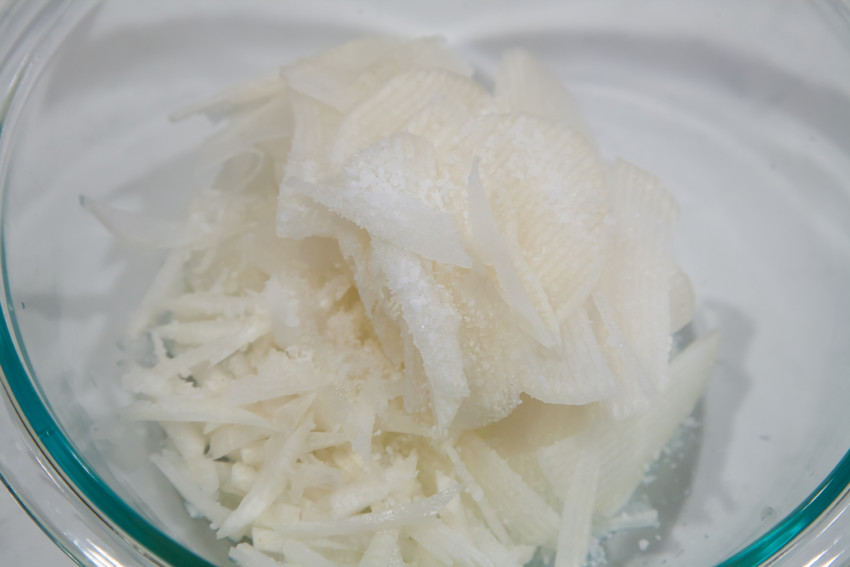
- Chop the green onion into small pieces. In a separate bowl, add the ground beef, the green onion pieces, the other 1/4 teaspoon of kosher salt, a pinch of ground black pepper, and the 1 tablespoon of sesame oil, mixing evenly.
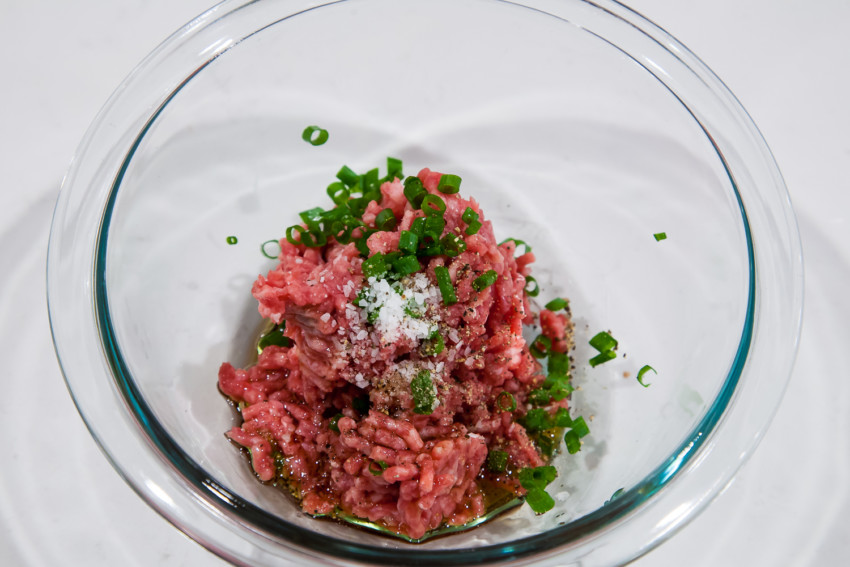
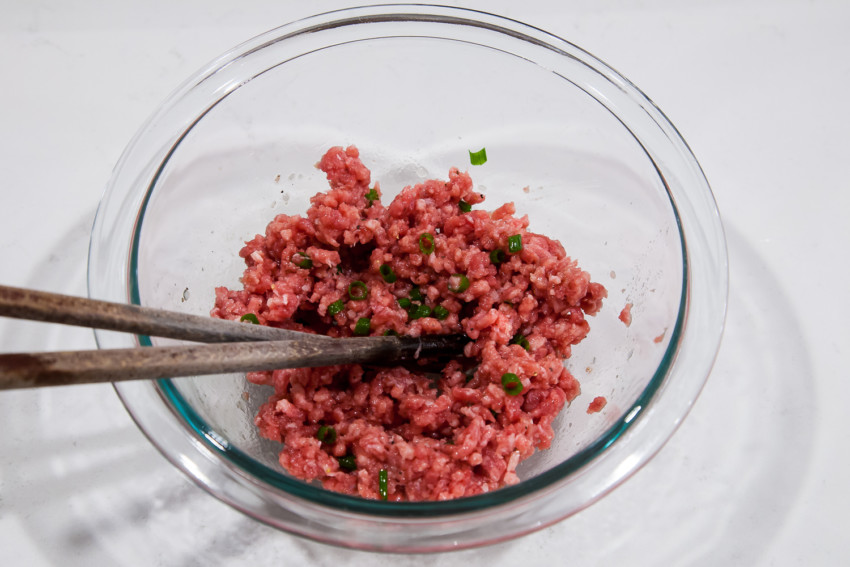
- When the daikon is done marinating, squeeze the daikon pieces hard with both hands to release the water until no water comes out. Add the daikon to the beef and use one hand or a pair of chopsticks to mix evenly.
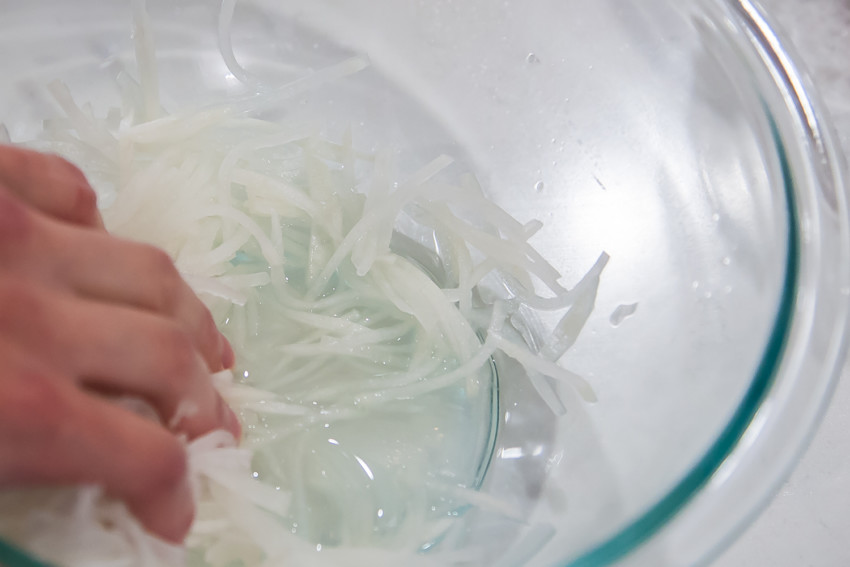

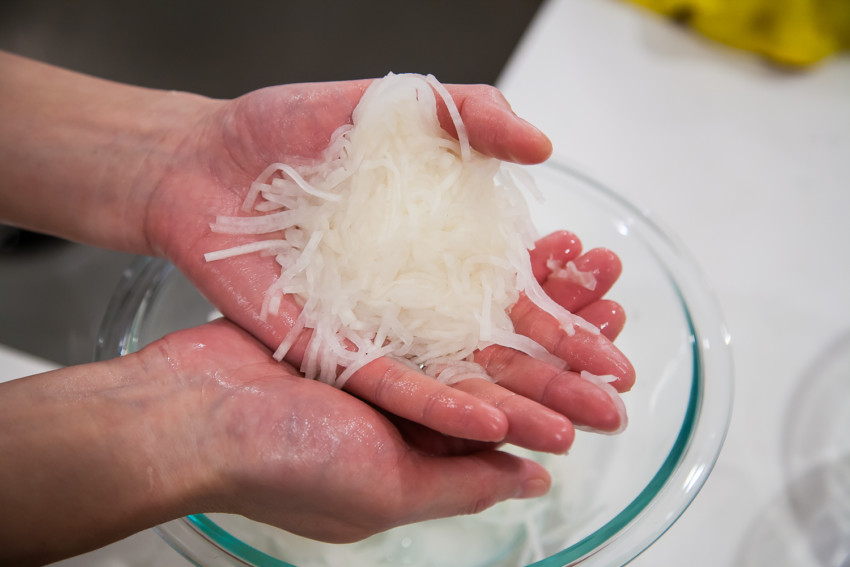
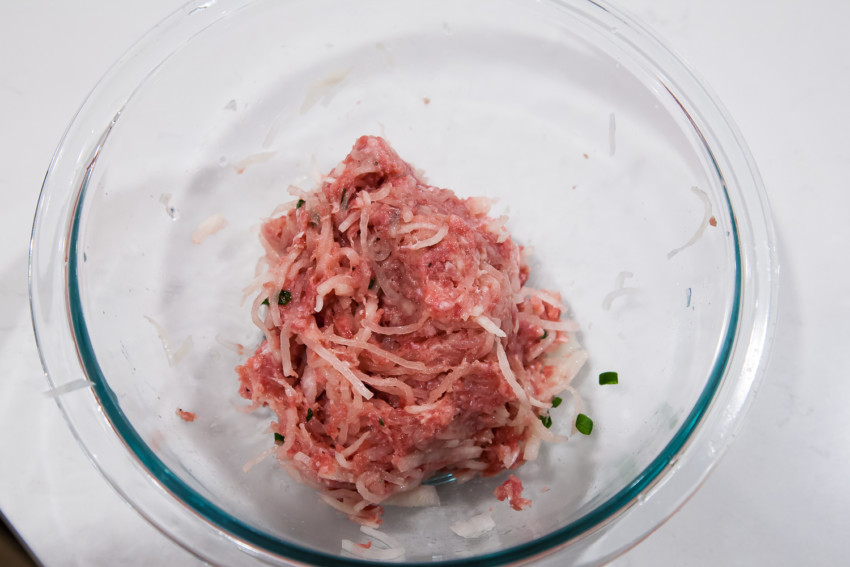
- Use a measurement spoon (about 1 tablespoon) or your hand to scoop up some of the daikon ground beef mixture. First roll it into a ball with both palms. Then gently press the ball into a small flat pie. Repeat the same procedure until all of the mixture has been turned into small pies.
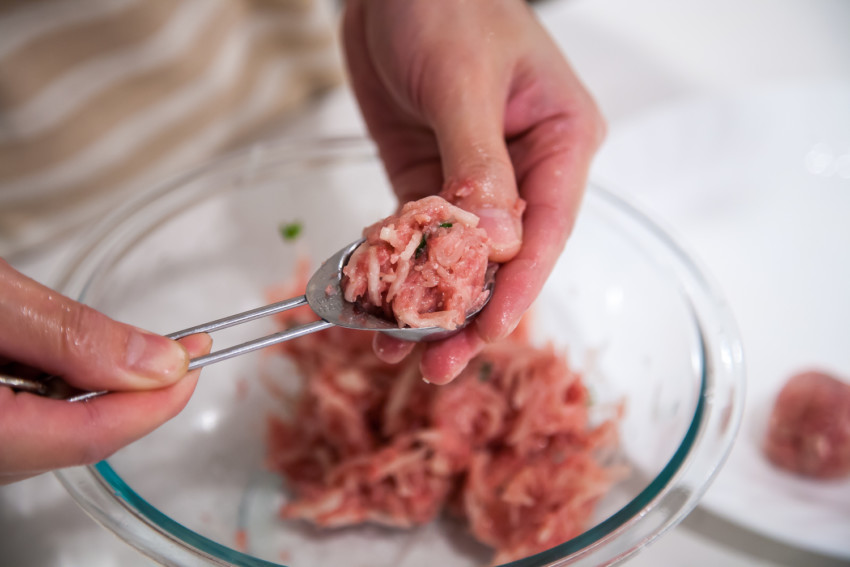
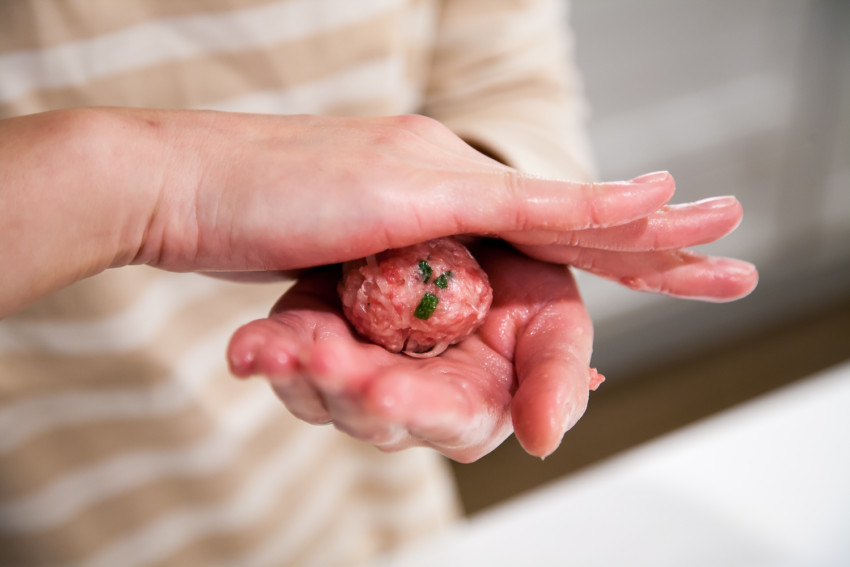
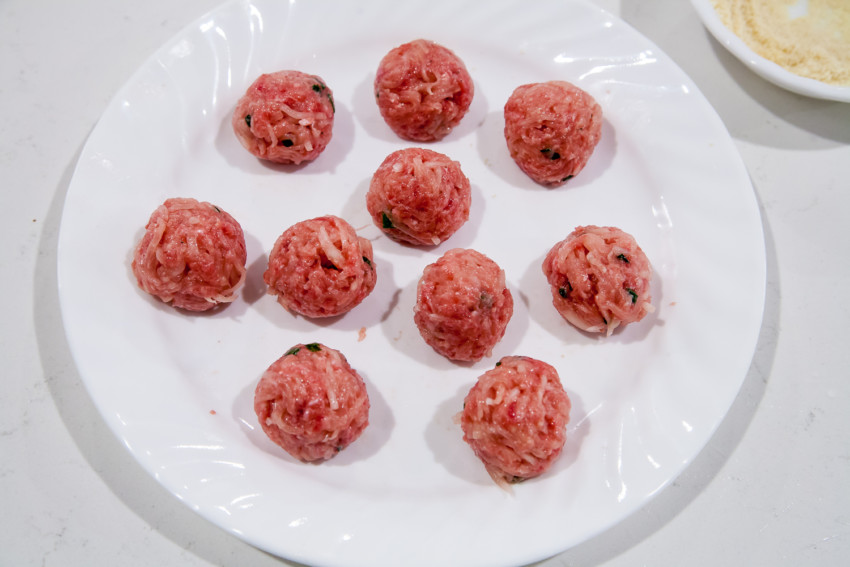
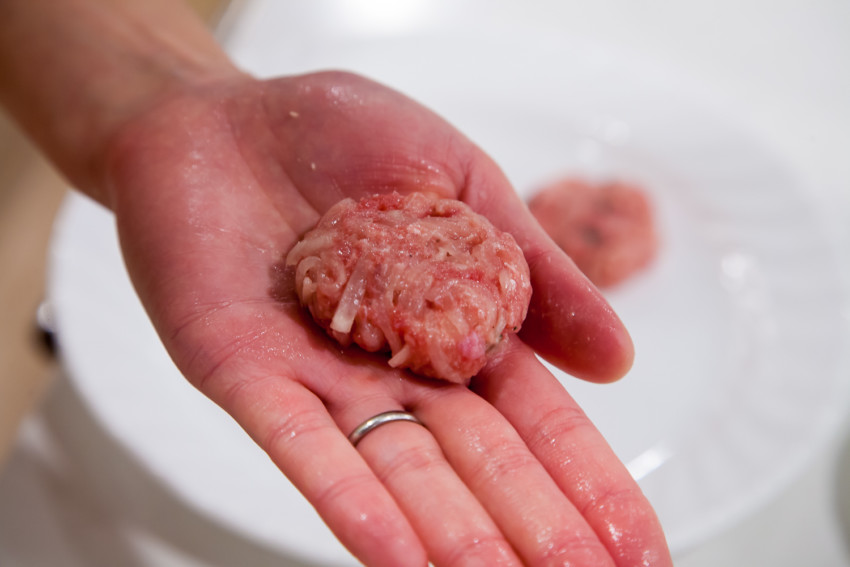
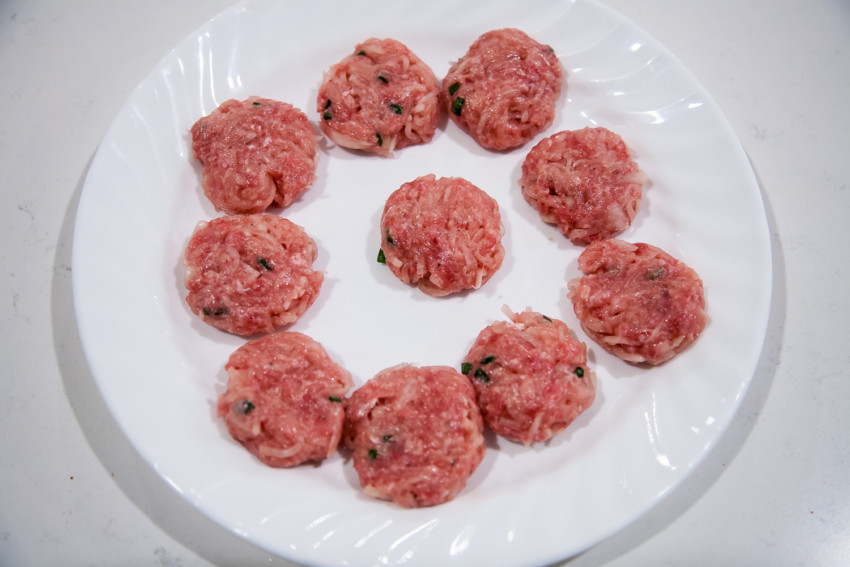
- Pour the 3 tablespoons of almond flour onto a small dish. Dab the pies in the almond flour so all sides are covered (You can do it all at once or one at a time while cooking).
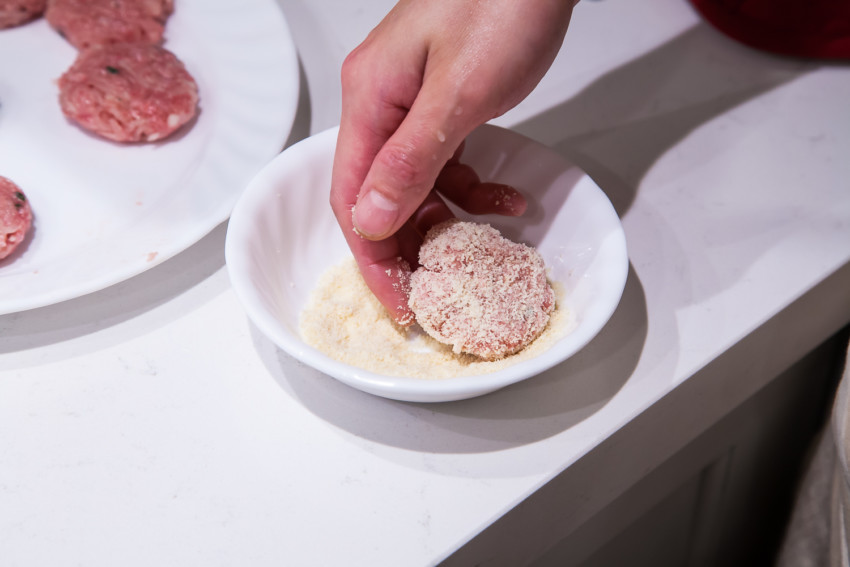
- Heat a nonstick pan or well-seasoned skillet under medium heat. When the pan is getting warm, add the 1 tablespoon of vegetable oil, using a brush to make sure the oil is evenly applied. Then one by one, place the almond-flour-covered daikon beef meat pies into the pan. Sear for 2 to 3 minutes before flipping to the other side. Sear for another 2-3 minutes or until both sides are lightly browned.
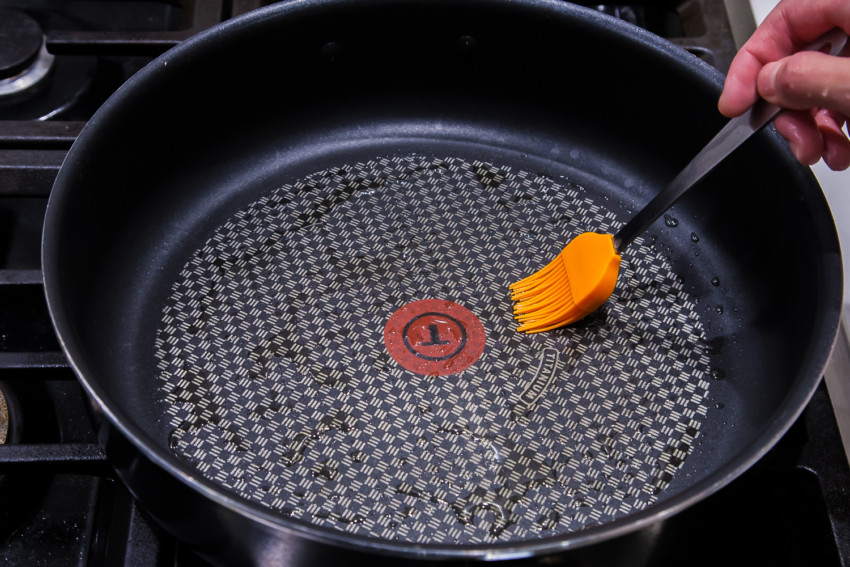
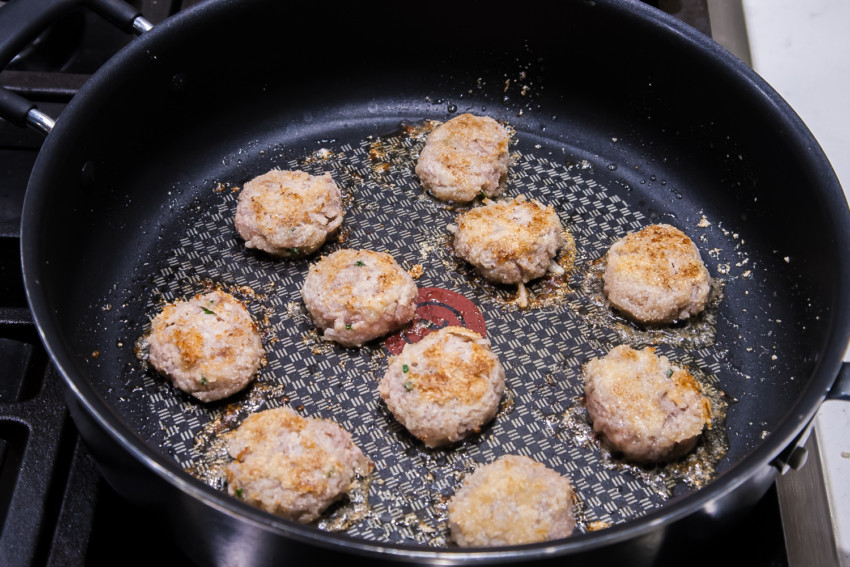
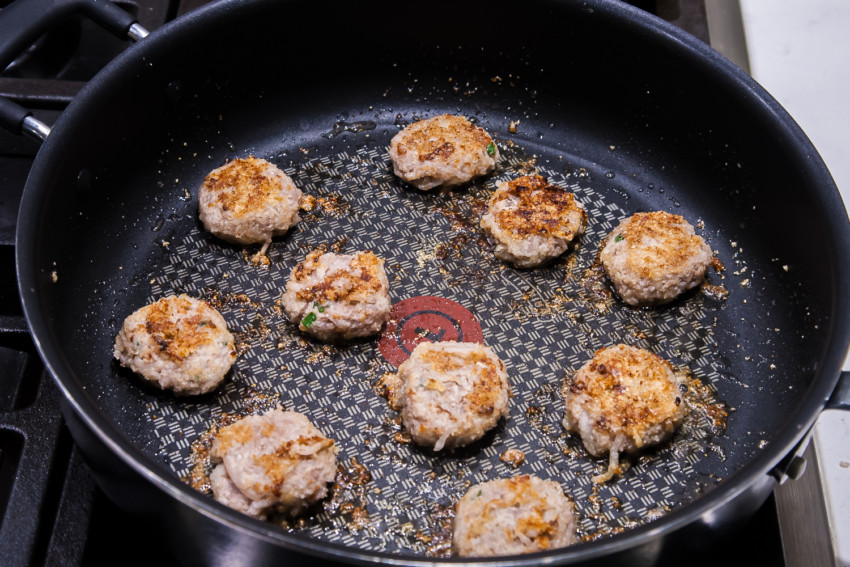
- Turn off the heat and transfer the pies to a plate. Let the meat pies cool for at least 1 minute before eating.

- Optional dipping sauce: in a small dish, add 1 tablespoon of light soy sauce, 1 1/2 teaspoons of Chinese black vinegar, and 1 teaspoon of minced garlic, mixing well. Dip the meat pies lightly in the sauce for added flavor.
Bon Appétit
Notes:
- People often refer to many of the Asian radishes as daikon. There are many different types. The most common one is the white daikon. The green daikon radish (青萝卜) is slightly sweeter, releases significantly less water, and tends to be more crunchy. There are also the ones that are purple inside but green outside. You can use any of these radishes. They may be slightly different in taste and flavor, but they all have that distinctive radish flavor. I personally like the green one best for this dish but it is a lot less common here, even in Asian grocery stores.
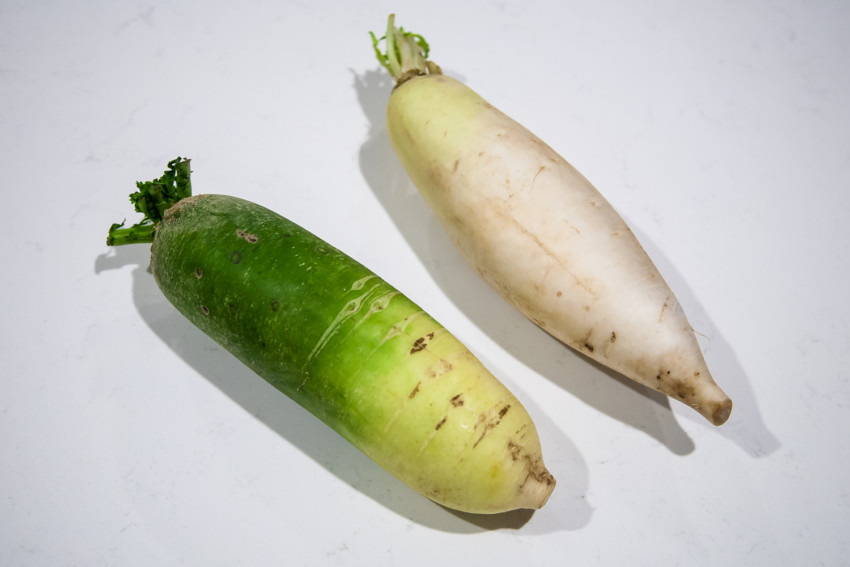
- You can also use panko or other bread crumbs but the result will no longer be low carb.
As an Amazon Associate I earn from qualifying purchases.


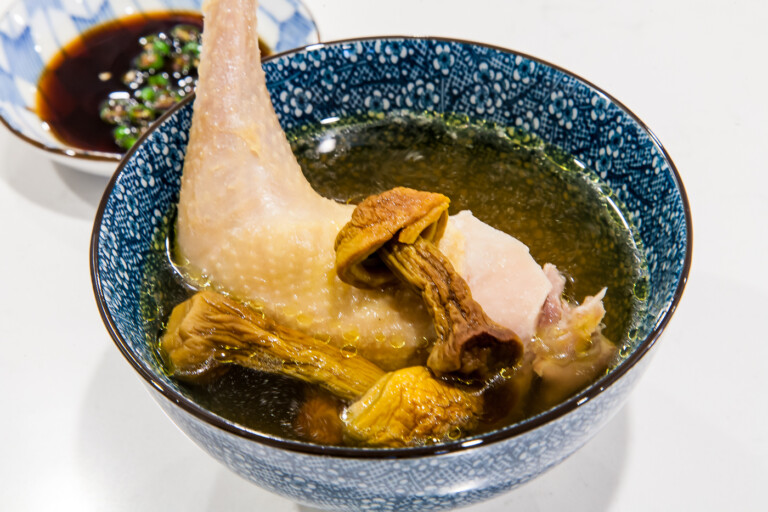
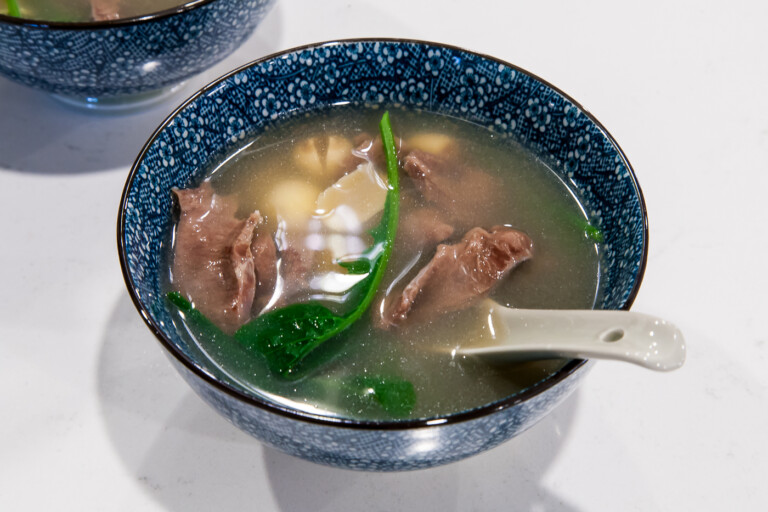
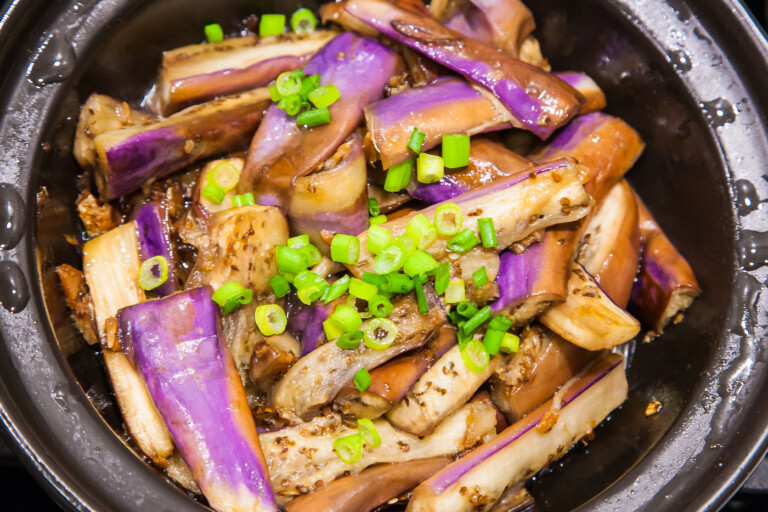
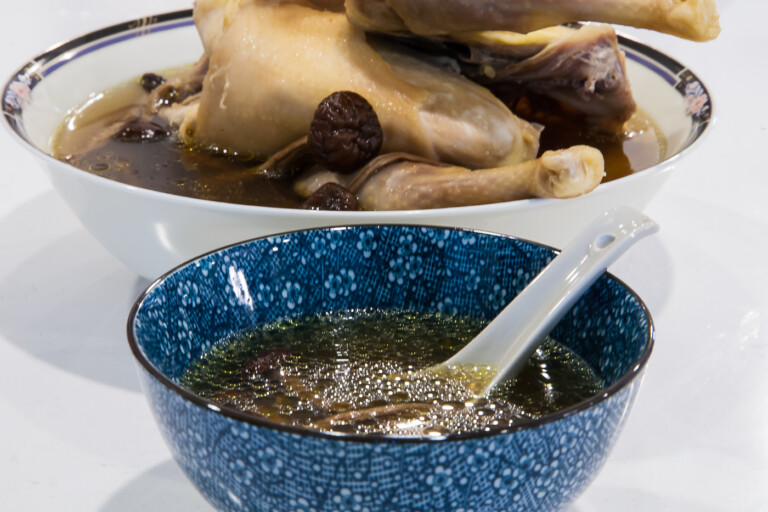
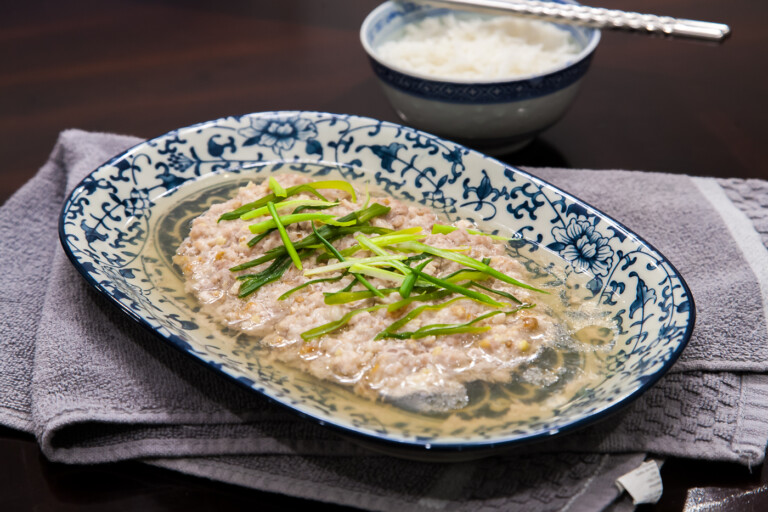
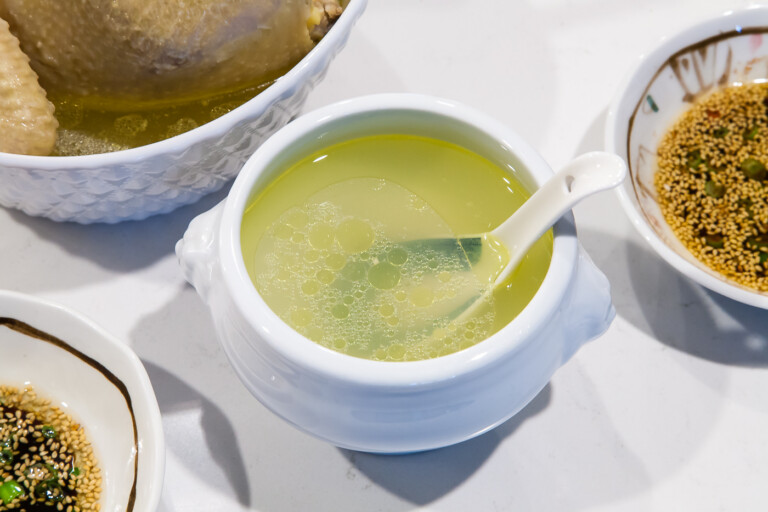
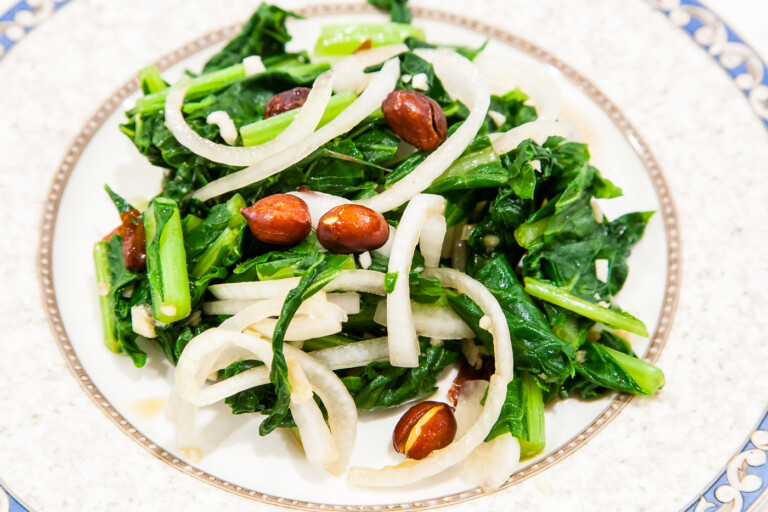
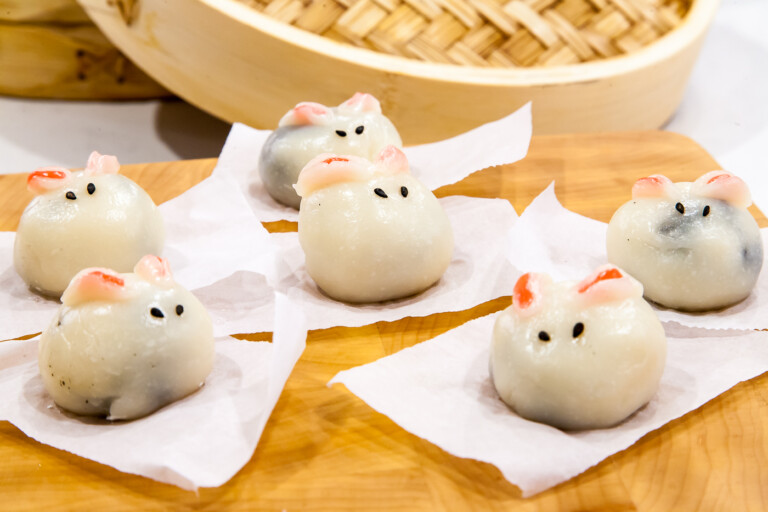
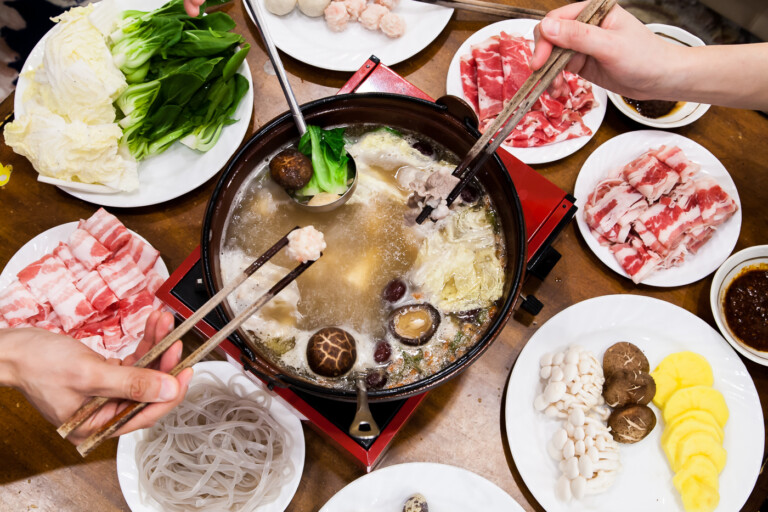
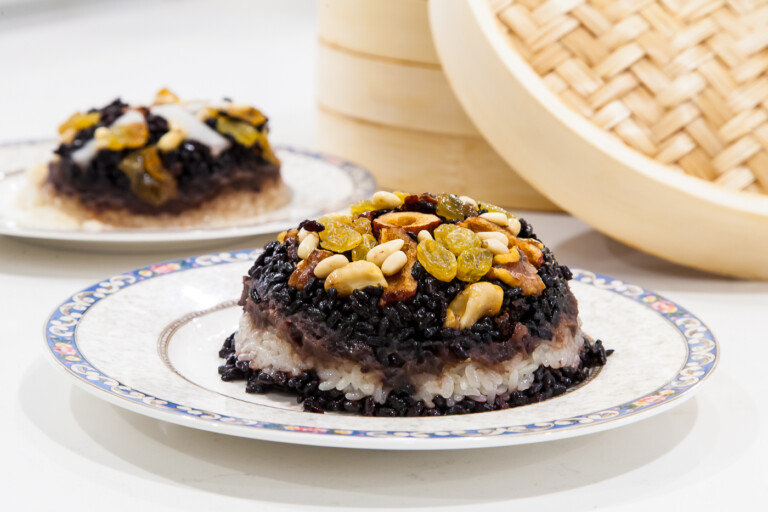
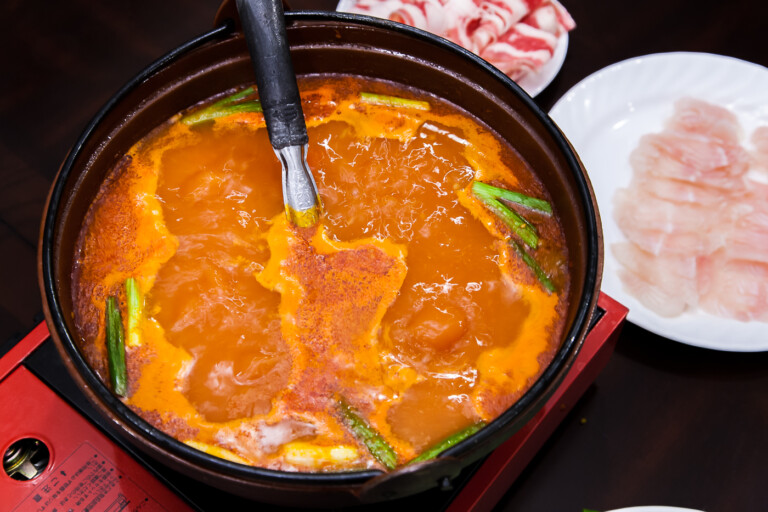
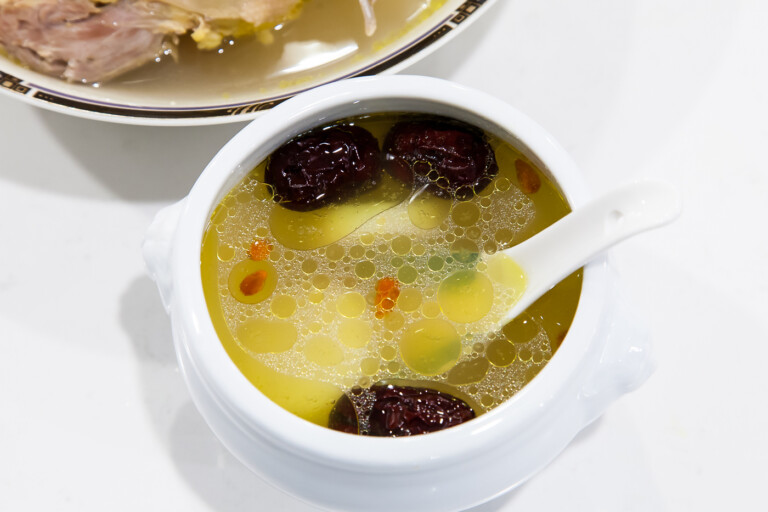
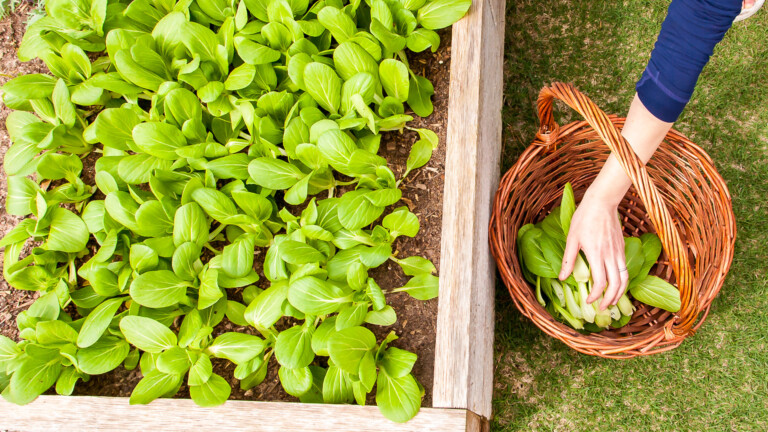
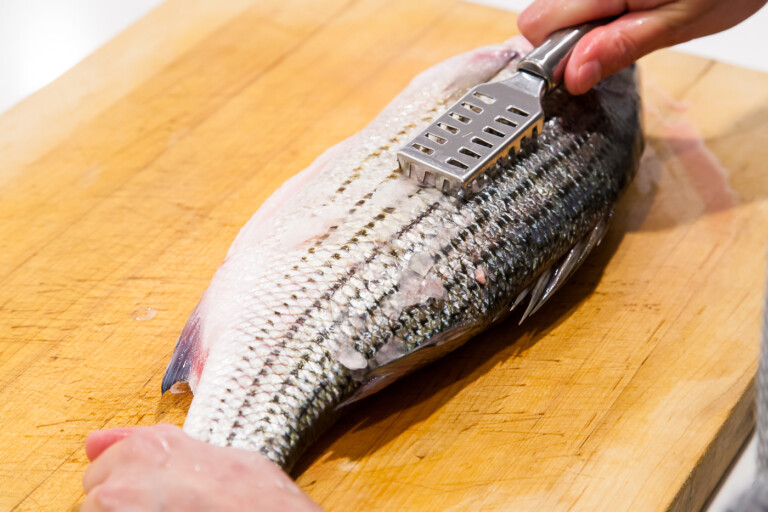
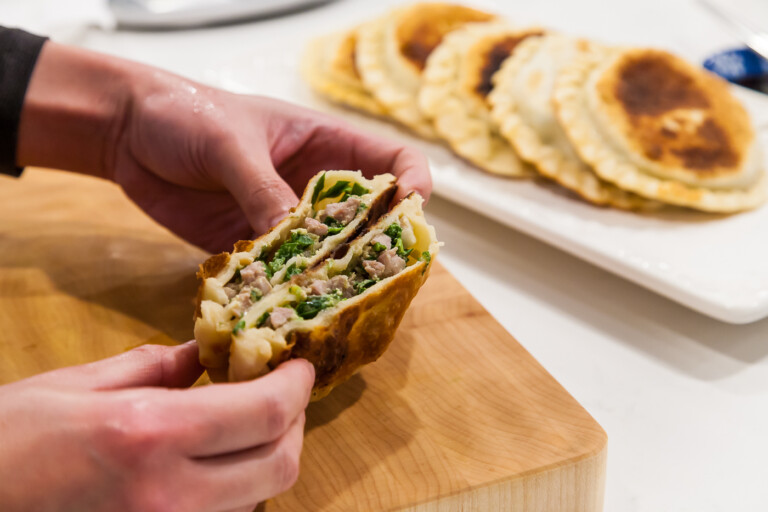
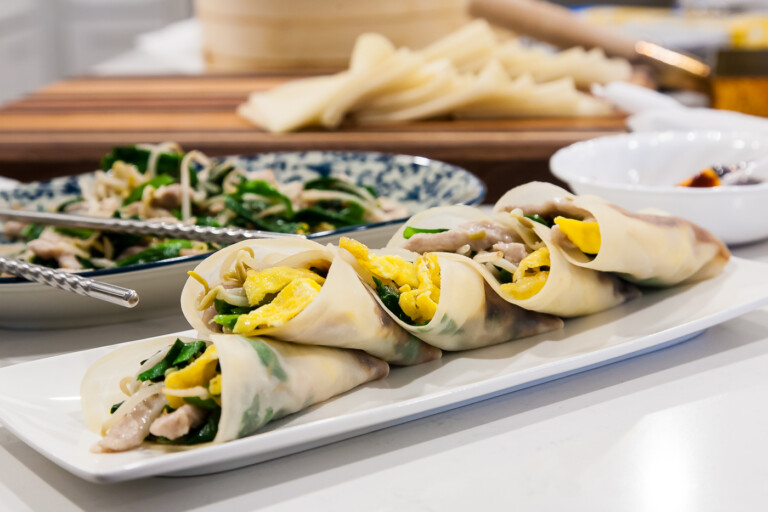
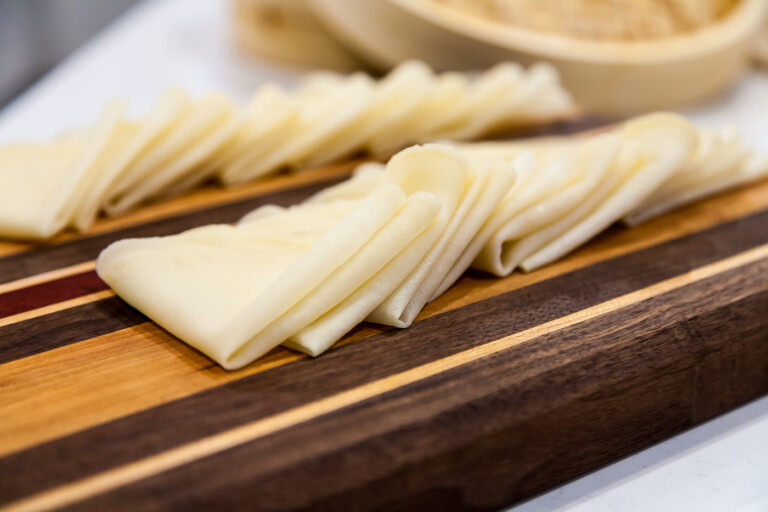
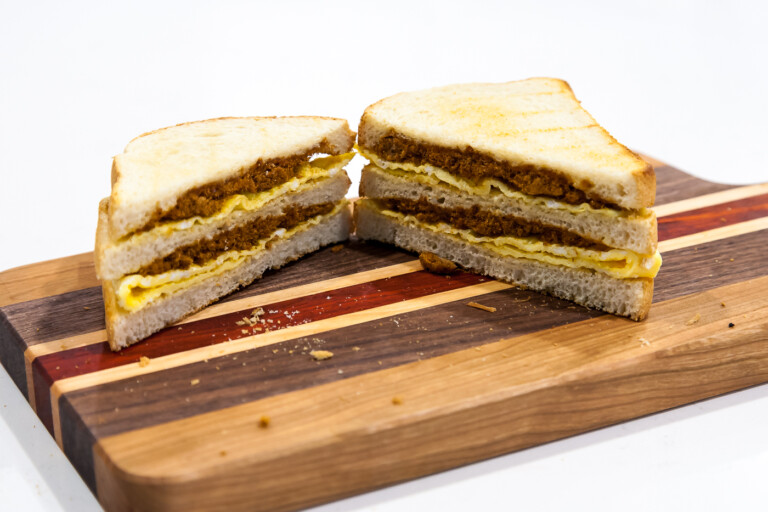


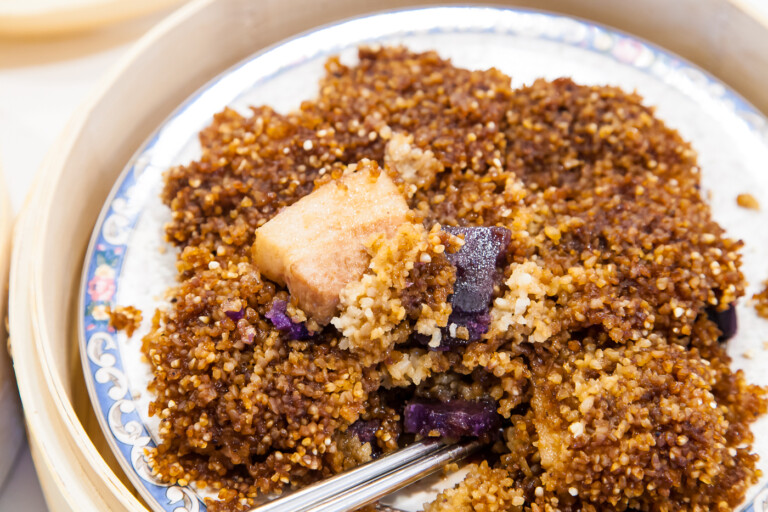
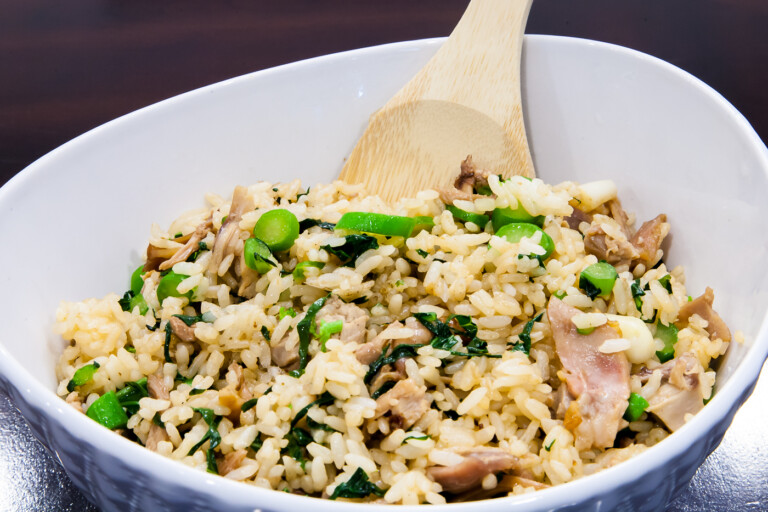
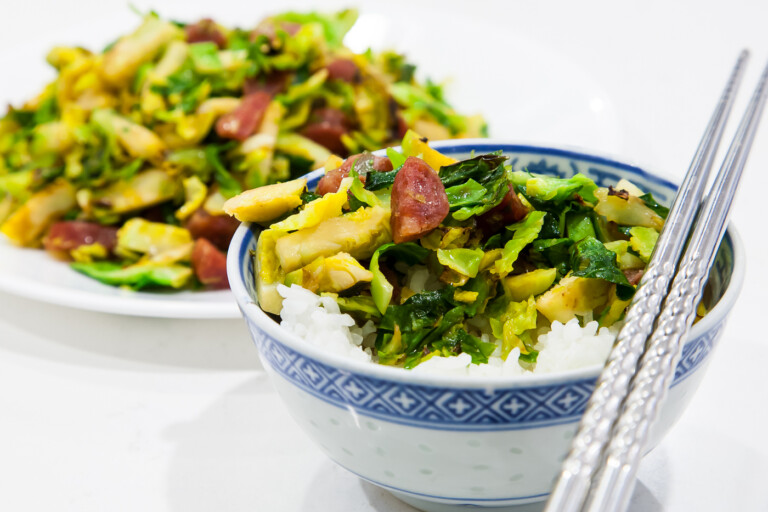
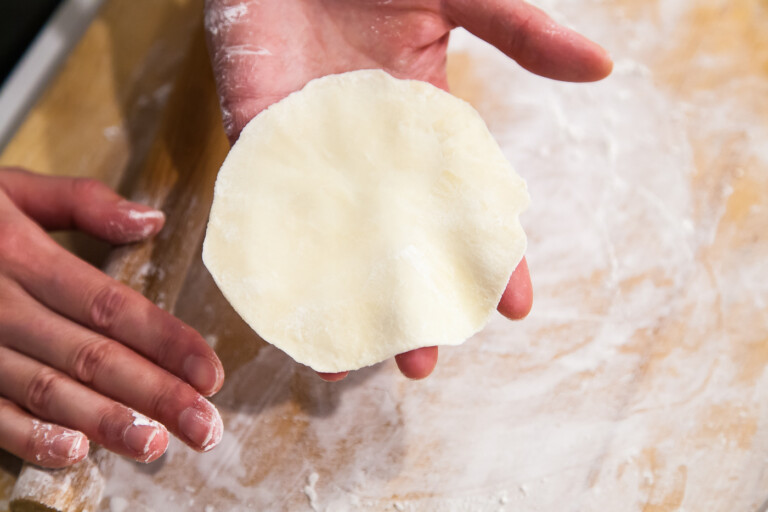

kevin wrote:
That’s an interesting idea: combining ground meat with daikon. It reminds me of the American idea of hash, which is ground/minced meat + grated/small dice potatoes.
However, I mostly wanted to comment on the distaste for these kinds of root vegetables, such as daikon, turnip, rutabaga, etc. I actually don’t like these under certain cooking methods. But, when done in other cooking methods, I really think these are some of the best vegetables. So, I’ll disclose what the French perspective is on how to cook these. Basically, the classic French approach is cook things like turnips with meat + seasoned water (which is spices, herbs, wine) for a long time (about 45 minutes). Additionally, there is a preparatory blanching technique (that is, just drop the turnips each split into 4 piece into salted boiling water for 2 minutes or so) that you do first before cooking the turnips with the meat. I think this blanching is to remove some of the bitter flavor components from the turnips. (However, that would seem to remove some nutrition as well….) That’s French folks, who aren’t vegetarians. For a vegetarian way, one can cook the turnips/daikons with some type of stock (salty, with umami) with a fat/oil (such as butter). Again for a long time.
In my experience, I find that if one does not cook turnips or daikon for a long enough time, then many of the bitter components remain inside the root. The long time in the liquid seems to pull out the bitter taste and disperse the bitterness throughout the water where it is less noticeable. And, the long time in the liquid seems to turn the turnip/daikon into a sort of sponge that absorbs all the tastes from the seasoned liquid. The long time method works for French cuisine with meat flavoring and also for Japanese cuisine in oden (中文: 關東煮) and miso soups.
It’s pretty interesting: on my tongue, a daikon will change from something I dislike to something I find very beautiful. Anyway, you might try making daikons this way to see if your family likes it.
My last thing to say is about these vegetables is that people differ genetically on how they taste plants. There was a study on cilantro/coriander leaves in which some people could not taste some flavors in cilantro but other people (with different genetics) could taste these same flavor chemicals. And, I looked and saw that scientists have found something similar with turnips: https://www.cell.com/current-biology/fulltext/S0960-9822(06)02061-6
They had people taste different vegetables including turnip, rutabaga, watercress, mustard greens, broccoli, & horseradish (which are known to make ‘glucosinolates’). And, the people were divided into groups: those that genetically had a hTAS2R38 taste receptor and those that did not. The human TAS2R38 receptor allows people to taste for antithyroid-toxins in plants. People with this taste receptor perceived the taste of turnips & rutabagas as being more bitter than people who did not have this receptor. So, it could be that your child & husband have this TAS2R38 receptor and you don’t have it? Well, we can’t know unless you all get yourselves genetically tested, haha. Anyway, when I read stuff like this science research, it makes me more sympathetic to people who don’t like certain foods – maybe they can taste something that my tongue cannot taste? Then, I won’t call them a ‘picky eater’ anymore. Their bodies are just different from mine.
AsianCookingMom wrote:
Hi Kevin, sorry it took me so long to give you a proper resonpse. My kids have been giving me colds, one after another. Thank you so much for putting so much thought and research into your comment on my post. I will definitely try your recommended method of cooking daikon. I’ve used daikon in making Japanese braised dishes, similar to oden and it was amazing. But I have not tried the French way.
Interesting article you linked! I guess I can’t really blame my kids or husband for not liking vegetables that taste bitter. They probably have more taste receptors than me. All I can do is to keep cooking these veggies and keep insisting they eat more of them. Hopefully they will eventually acquire the taste. I do remember I used to dislike cilantro when I was a child. But my grandparents would keep putting cilantro in different dishes. And I don’t know how and when it happened, but somehow I grew to like it!
Jay wrote:
But this is not a pie, it’s a cutlet?
AsianCookingMom wrote:
You’re not wrong. The reason I called it a meat pie (and it’s often called a meat pie by others) is that the translation for “rou bing” is often translated as meat pie.
Hope you get a chance to try these cutlets!